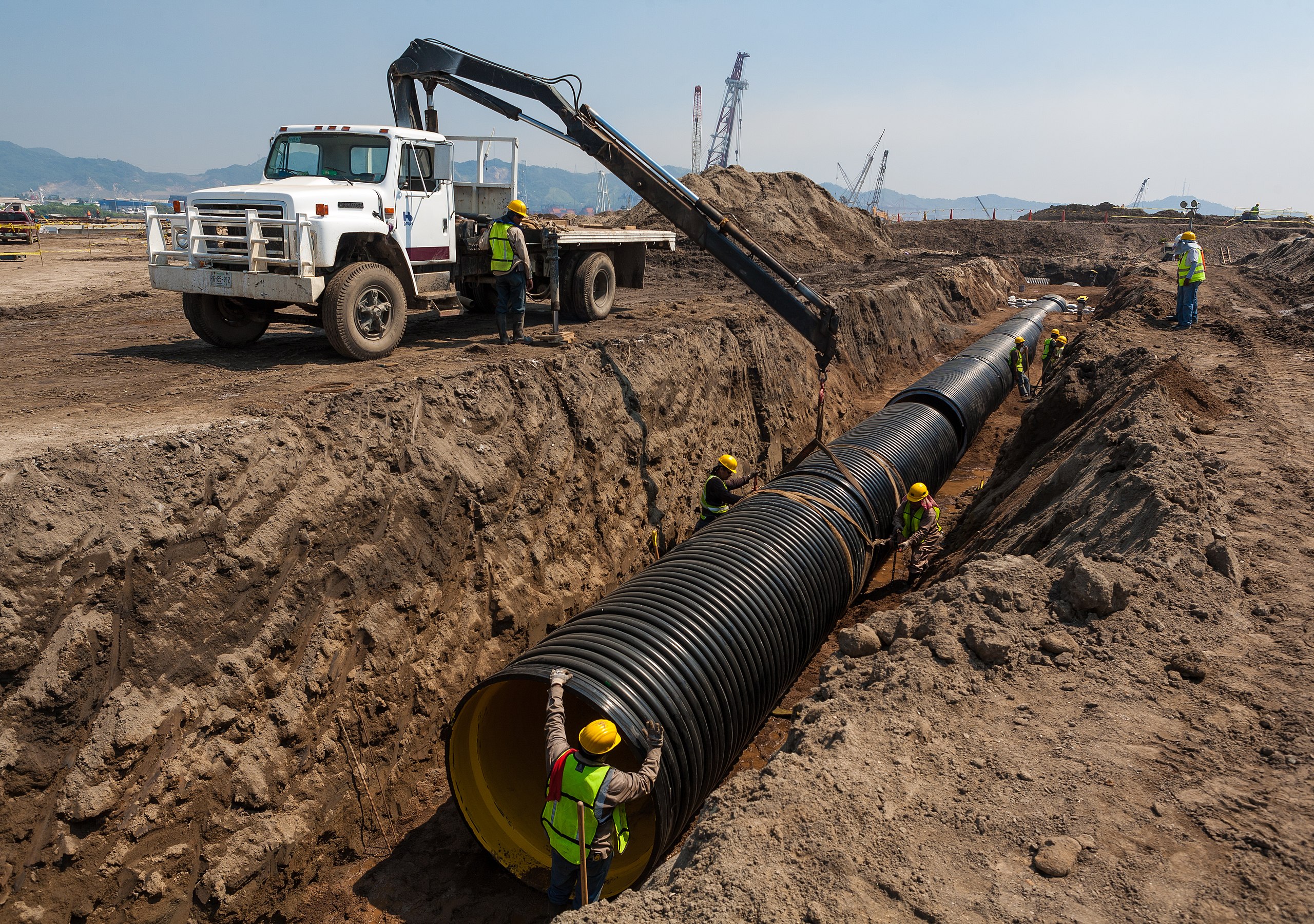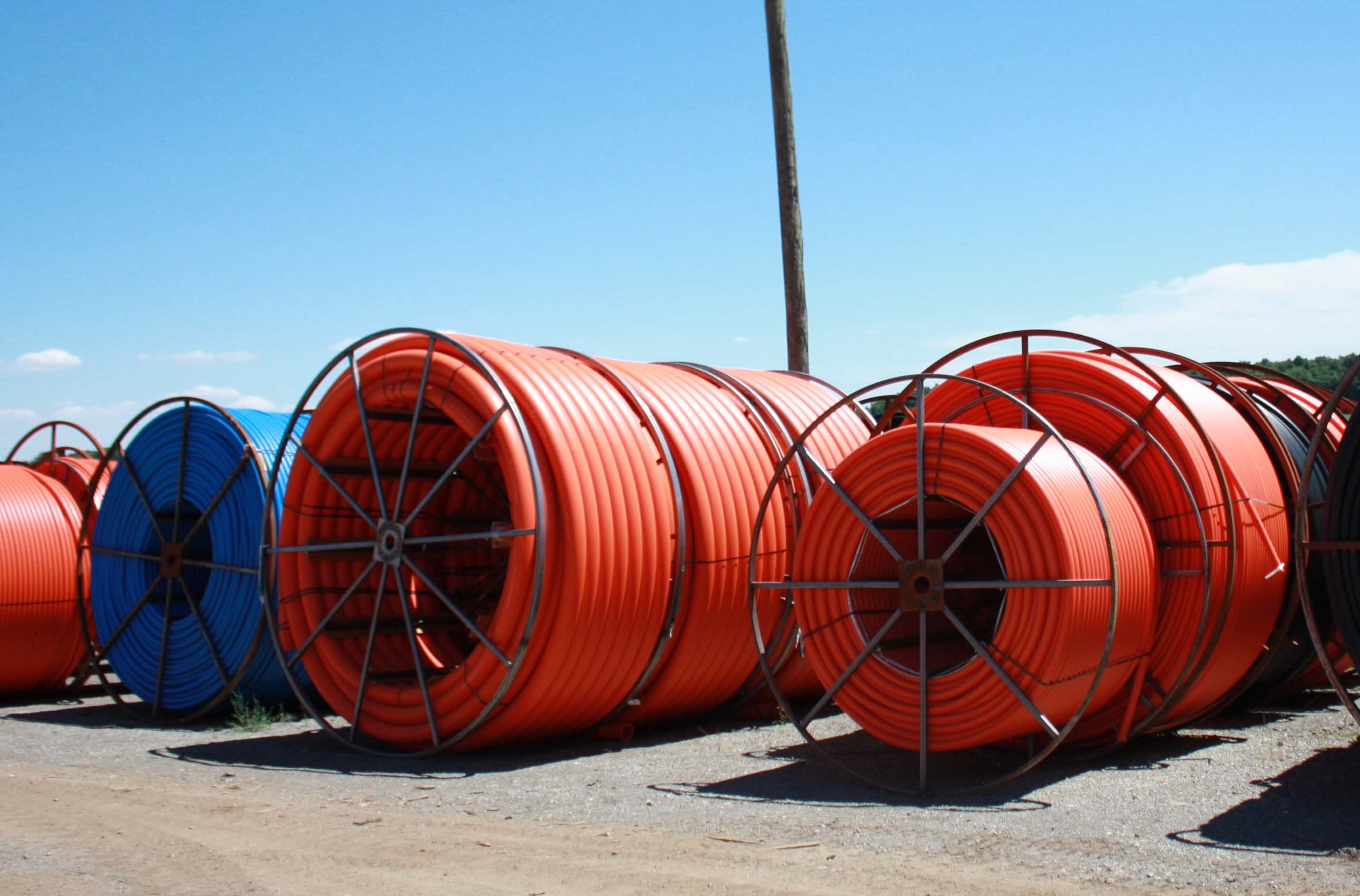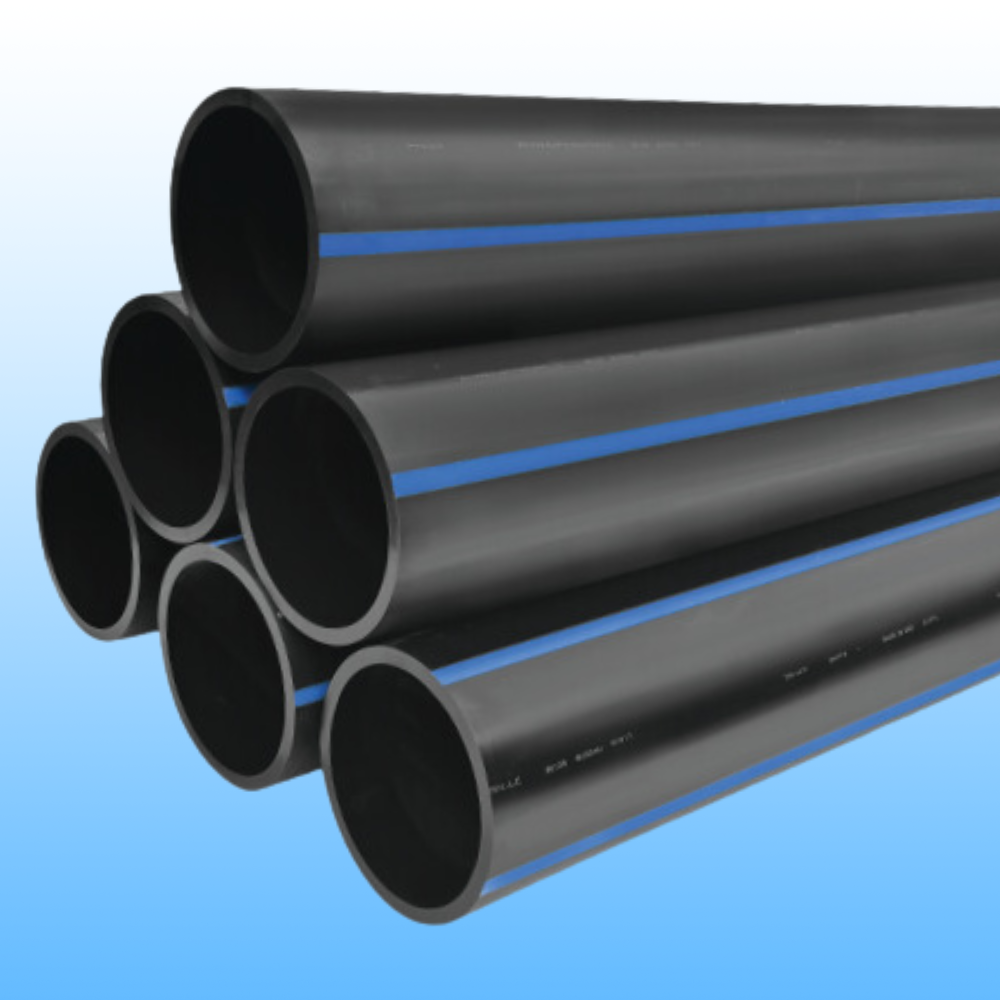custom hdpe pipe manufacturing Midland TX: Innovations Shaping the Market
Wiki Article
Discover the Manufacturing Refine Behind High-Quality HDPE Pipeline and Its Applications
The manufacturing procedure of premium HDPE pipelines is detailed and systematic. It starts with the choice of basic materials that improve efficiency. Following this, ethylene goes through polymerization to form material, which is then formed with extrusion. Quality assurance is critical, making certain that the last product meets rigid requirements. Nonetheless, the journey of HDPE pipes doesn't end with production. Their applications across different industries disclose a wider value worth examining.Recognizing HDPE: Properties and Advantages

High-density polyethylene (HDPE) is a flexible polycarbonate known for its longevity and resistance to numerous ecological variables. This product shows excellent tensile toughness, making it appropriate for demanding applications. Its low-density structure contributes to a lightweight product, promoting simplicity of managing and installment. HDPE also showcases exceptional resistance to chemicals, which minimizes deterioration when revealed to extreme materials.
The material's low moisture absorption even more improves its durability, making it ideal for use in pipes and tank. Additionally, HDPE is resistant to ultraviolet (UV) radiation, making certain that items keep their honesty even when subjected to sunlight. Furthermore, its versatility enables the creation of intricate shapes without endangering toughness. The environmentally friendly nature of HDPE, often stemmed from recycled products, contributes to its appeal, advertising sustainable techniques in production. In general, these buildings and advantages make HDPE a preferred selection for different commercial and consumer applications.
Raw Material Choice for HDPE Manufacturing
The selection of basic materials for HDPE manufacturing is necessary to verify the end product meets the wanted requirements and quality requirements. High-density polyethylene (HDPE) is mainly generated from polymerized ethylene, derived from fossil fuels such as gas or petroleum. The top quality of these feedstocks considerably affects the mechanical and thermal properties of the final HDPE.Ingredients likewise play a significant role in boosting HDPE's efficiency, including antioxidants, UV stabilizers, and colorants, which boost toughness and resistance to environmental variables. The option process need to think about not just the chemical structure of the raw products yet additionally their handling features to guarantee reliable production.
Additionally, the sourcing of basic materials ought to focus on sustainability and compliance with ecological policies, as liable practices are critical in today's market. Ultimately, cautious resources option lays the structure for producing premium HDPE pipes suitable for diverse applications.
The Extrusion Refine: Forming HDPE Pipeline
The extrusion procedure plays an essential duty in shaping HDPE pipes, beginning with careful material preparation methods that ensure perfect circulation and consistency. Similarly crucial is the design of the die, which directly influences the final dimensions and surface high quality of the pipeline. With each other, these factors add considerably to the efficiency and high quality of HDPE pipeline manufacturing.Material Preparation Methods
Effective manufacturing of HDPE pipes starts with meticulous material preparation methods, especially the extrusion process. During this phase, high-density polyethylene material is initial dried out to remove dampness, ensuring excellent flow attributes. The resin is then fed right into the extruder, where it undergoes heating and melting, changing right into a viscous state. This heating procedure is meticulously regulated to keep the product's integrity and performance. The liquified HDPE is required via a die, stack plumbing forming it into a constant pipeline form. Correct temperature monitoring throughout extrusion is necessary, as it straight affects the product's residential properties and the end product high quality. When formed, the HDPE pipeline is cooled down and cut to specified lengths, all set for subsequent handling and applications.Die Style Importance
Accuracy in die design plays a crucial duty in the extrusion process of HDPE pipes. The die acts as the last shaping tool, directly affecting the pipe's measurements, wall density, and surface finish. A properly designed die guarantees uniform material circulation, minimizing issues such as abnormalities and weak areas. The geometry of the die need to be enhanced to fit the particular properties of HDPE, including its thickness and thermal actions during extrusion. Furthermore, the cooling price of the product as it goes through the die can noticeably affect the pipeline's structural honesty. Spending in sophisticated die innovation is essential for suppliers intending to generate high-grade HDPE pipes that fulfill sector standards and consumer assumptions.Quality Assurance Steps in HDPE Manufacturing
Different factors influence the high quality of HDPE pipe manufacturing, effective quality control steps are vital to ensure consistency and reliability in the last item (hdpe pipe in stock Midland TX). Secret quality assurance methods consist of rigorous material inspection, verifying that the raw polyethylene fulfills well established standards for pureness and density. Throughout the extrusion procedure, parameters such as temperature, pressure, and cooling time are closely checked to keep dimensional precision and structural stabilityIn addition, post-production screening is essential; manufacturers frequently perform hydrostatic examinations to examine the pipe's toughness and resistance to stress. Aesthetic examinations for surface area issues even more enhance high quality guarantee. Certification from relevant standards companies, like ASTM or ISO, supplies an additional layer of reputation. By implementing these extensive quality assurance steps, producers can decrease problems, enhance performance, and guarantee that the HDPE pipelines satisfy the certain needs of different applications, ultimately causing client fulfillment and count on the item.
Applications of HDPE Pipe Across Industries
HDPE pipes are used throughout different fields because of their toughness and flexibility. see this here In water circulation systems, they ensure reliable distribution, while in wastewater management, they provide trusted remedies for waste transportation. In addition, agricultural watering networks take advantage of HDPE's resistance to deterioration and adaptability, making it an optimal selection for modern farming methods.
Water Distribution Equipments
A considerable variety of industries count on high-density polyethylene (HDPE) pipes for effective water distribution systems. Understood for their longevity and resistance to deterioration, HDPE pipelines are widely utilized in community supply of water networks, farming irrigation, and commercial applications. Their light-weight nature promotes very easy handling and installment, minimizing labor expenses and time. In addition, HDPE pipes can suit various pressure levels, making them appropriate for both low and high-pressure systems. hdpe pipe fittings Midland TX. The adaptability of the product permits seamless combination right into existing infrastructure, lessening the requirement for considerable excavation. HDPE's resistance to chemical seeping warranties that the water delivered continues to be secure and tidy, making it an excellent selection for keeping the top quality of drinkable water across different sectors.Wastewater Management Solutions
Reliable water distribution systems likewise lead the way for cutting-edge wastewater administration remedies, where high-density polyethylene (HDPE) pipelines play a substantial duty. Renowned for their longevity and resistance to corrosion, HDPE pipelines are optimal for delivering wastewater in numerous settings. Their versatility enables very easy installation in intricate environments, lessening the need for comprehensive excavation. Additionally, HDPE's smooth indoor surface area reduces friction, enhancing flow rates and efficiency. These pipes are likewise resistant to chemical leaching, making sure that pollutants do not endanger the surrounding atmosphere. Industries, towns, and treatment centers significantly count on HDPE pipelines for their integrity and long life, making them a recommended option for contemporary wastewater management systems. This versatility emphasizes the essential significance of HDPE pipelines throughout numerous applications.Agricultural Irrigation Networks
Agricultural irrigation networks benefit greatly from making use of high-density polyethylene (HDPE) pipes, which give reliable and trustworthy water shipment to crops. HDPE pipes are lightweight, making them simple to carry and mount, while their flexibility permits various setups in varied terrains. These pipelines demonstrate outstanding resistance to corrosion, chemicals, and UV radiation, making certain resilience in harsh agricultural settings. Furthermore, their smooth indoor surface area decreases rubbing loss, enhancing water flow and decreasing energy expenses connected with pumping. The longevity of HDPE pipelines, usually surpassing 50 years, adds to decrease upkeep and replacement expenditures. Farmers increasingly rely on HDPE pipes to improve watering performance and advertise lasting farming techniques, eventually leading to improved plant returns and source conservation.
Future Patterns in HDPE Pipeline Modern Technology
As the need for sustainable and efficient infrastructure expands, advancements in HDPE pipe modern technology are positioned to transform various markets. Emerging fads consist of the more information integration of clever innovations, such as sensors and IoT abilities, which facilitate real-time tracking of pipe conditions, reducing maintenance prices and avoiding leakages. In addition, the development of advanced manufacturing methods, such as 3D printing, is enabling the manufacturing of complicated, tailored pipeline layouts that provide to specific project demands.Furthermore, the concentrate on recycling and circular economic climate techniques is driving the innovation of HDPE pipes made from recycled products, boosting sustainability. Boosted jointing methods, such as electro-fusion and mechanical installations, are additionally boosting installation effectiveness and reliability. The expanding focus on environmental guidelines is pressing manufacturers to embrace greener production processes, making sure that HDPE pipes not only satisfy industry requirements yet additionally cultivate an even more lasting future for framework growth.
Regularly Asked Questions
Exactly How Does HDPE Contrast to Various Other Plastic Products?
HDPE outperforms lots of other plastic products concerning toughness, chemical resistance, and adaptability. Its low thickness and high tensile stamina make it perfect for numerous applications, commonly going beyond choices in both efficiency and durability.What Are the Environmental Impacts of HDPE Manufacturing?
The environmental impacts of HDPE production include greenhouse gas exhausts, power consumption, and potential pollution from producing procedures. Additionally, inappropriate disposal can cause dirt and water contamination, raising concerns regarding long-lasting ecological impacts.Can HDPE Water Lines Be Recycled?
Yes, HDPE pipelines can be reused. Many centers accept used HDPE for handling, changing it right into brand-new items. This recycling adds to sustainability efforts, minimizing plastic waste while conserving resources and energy in the production cycle.What Is the Lifespan of HDPE Pipeline?

Just How Do Temperature Level Variations Influence HDPE Pipeline Efficiency?
Temperature level variants considerably influence HDPE pipe efficiency, affecting adaptability and stamina. Heats can lead to softening, while reduced temperatures might trigger brittleness, ultimately affecting the pipeline's sturdiness and suitability for different applications in diverse environments.Report this wiki page